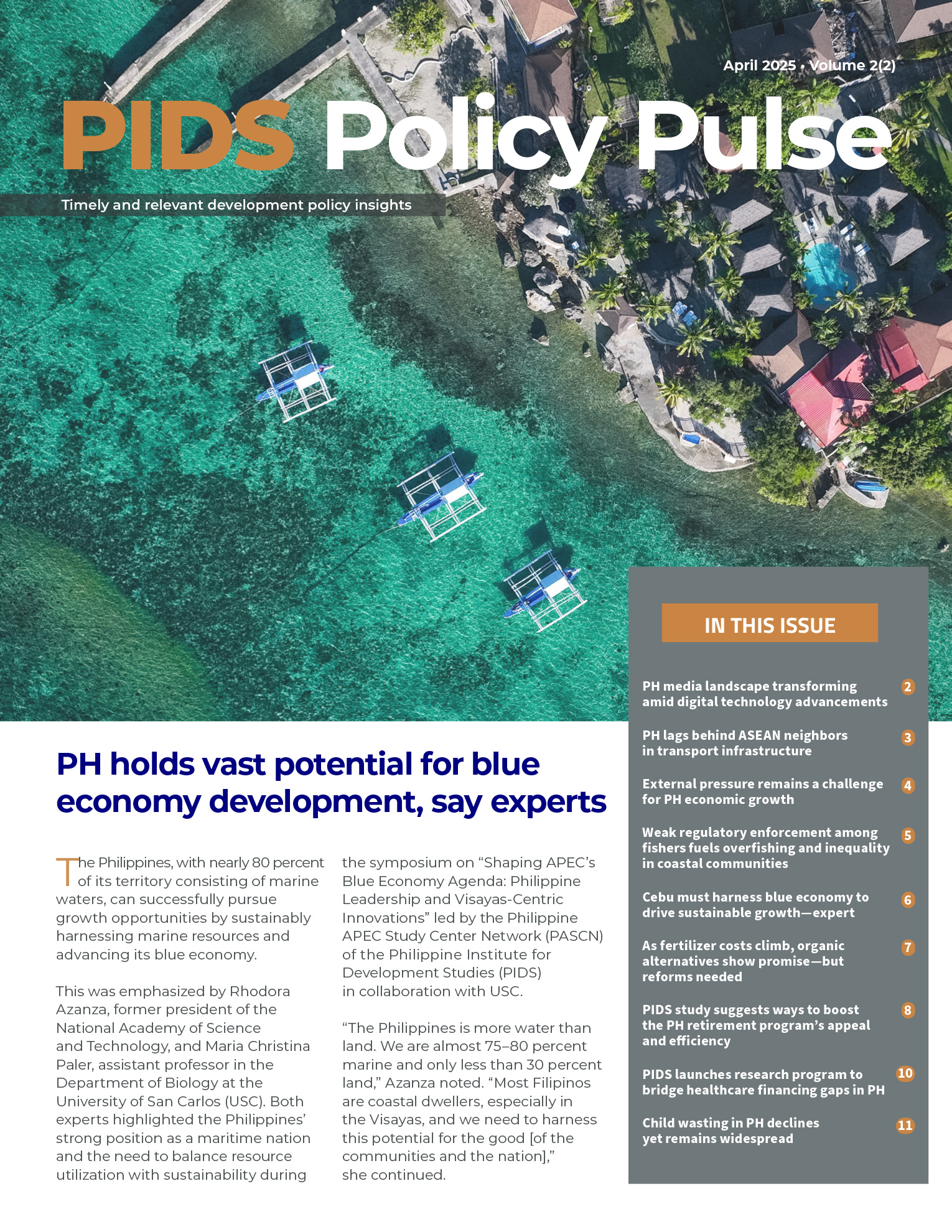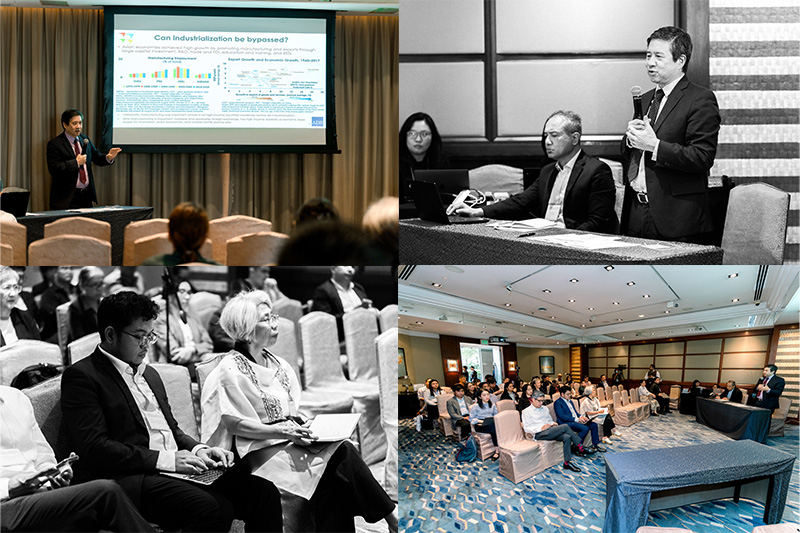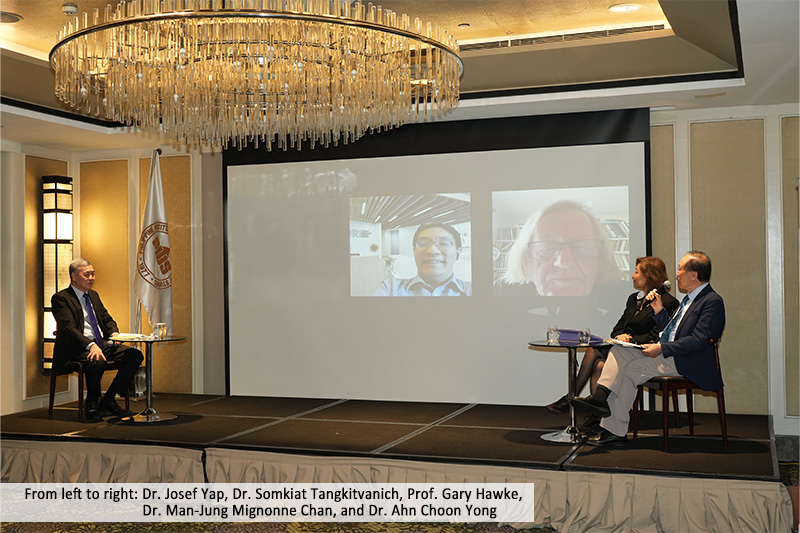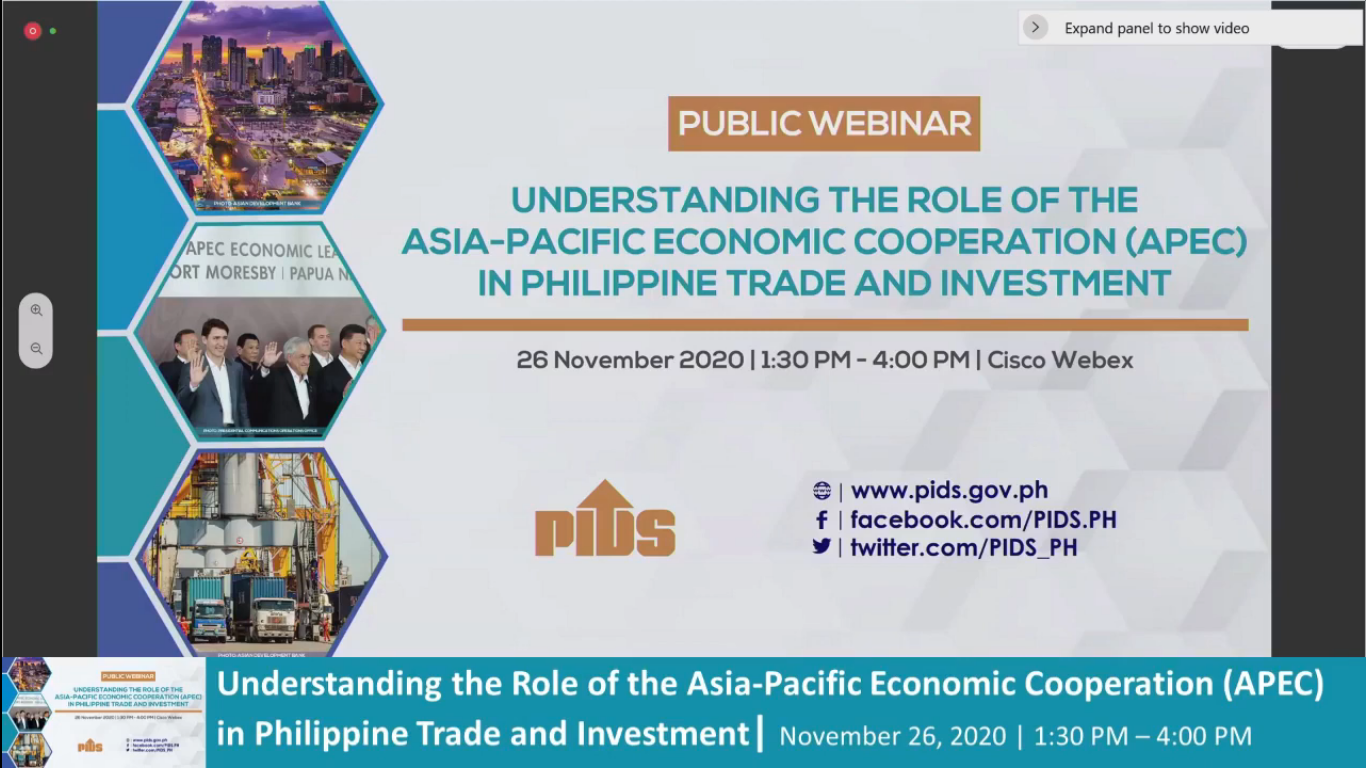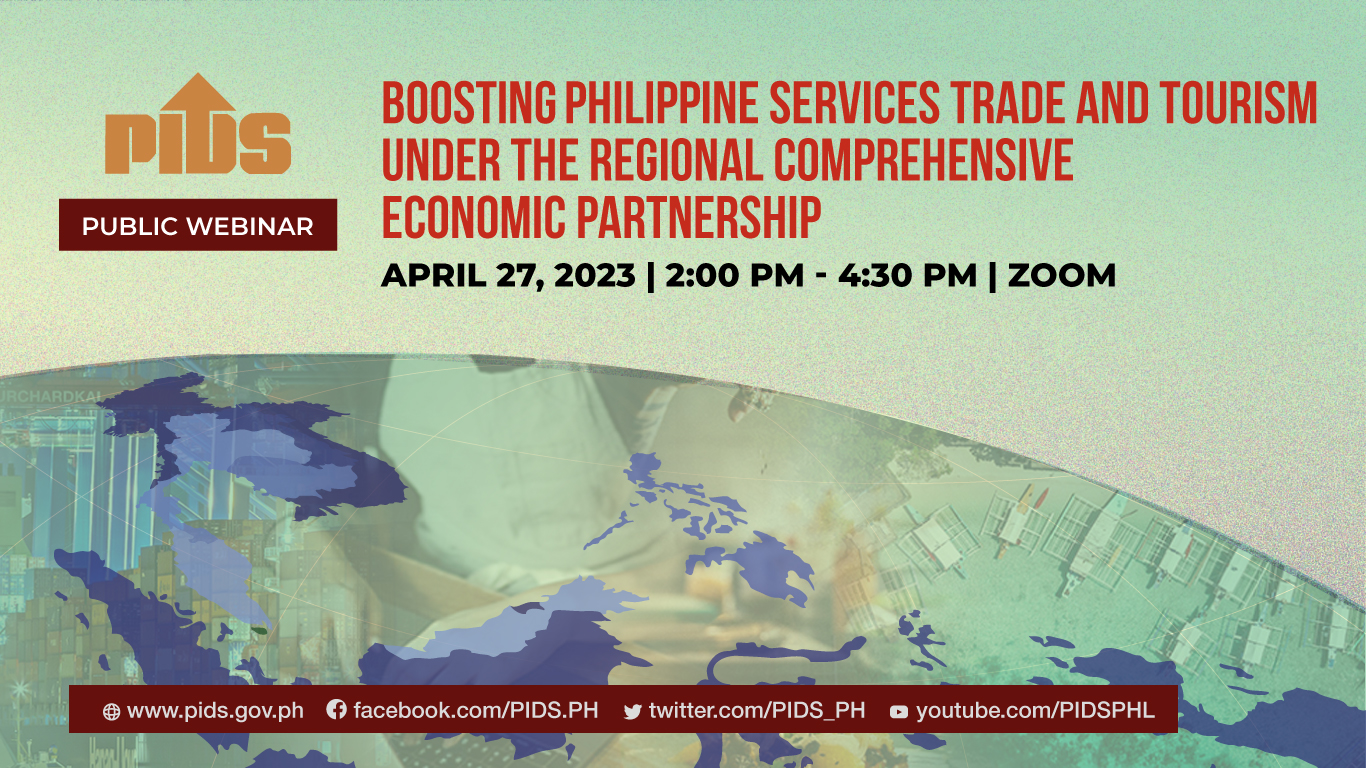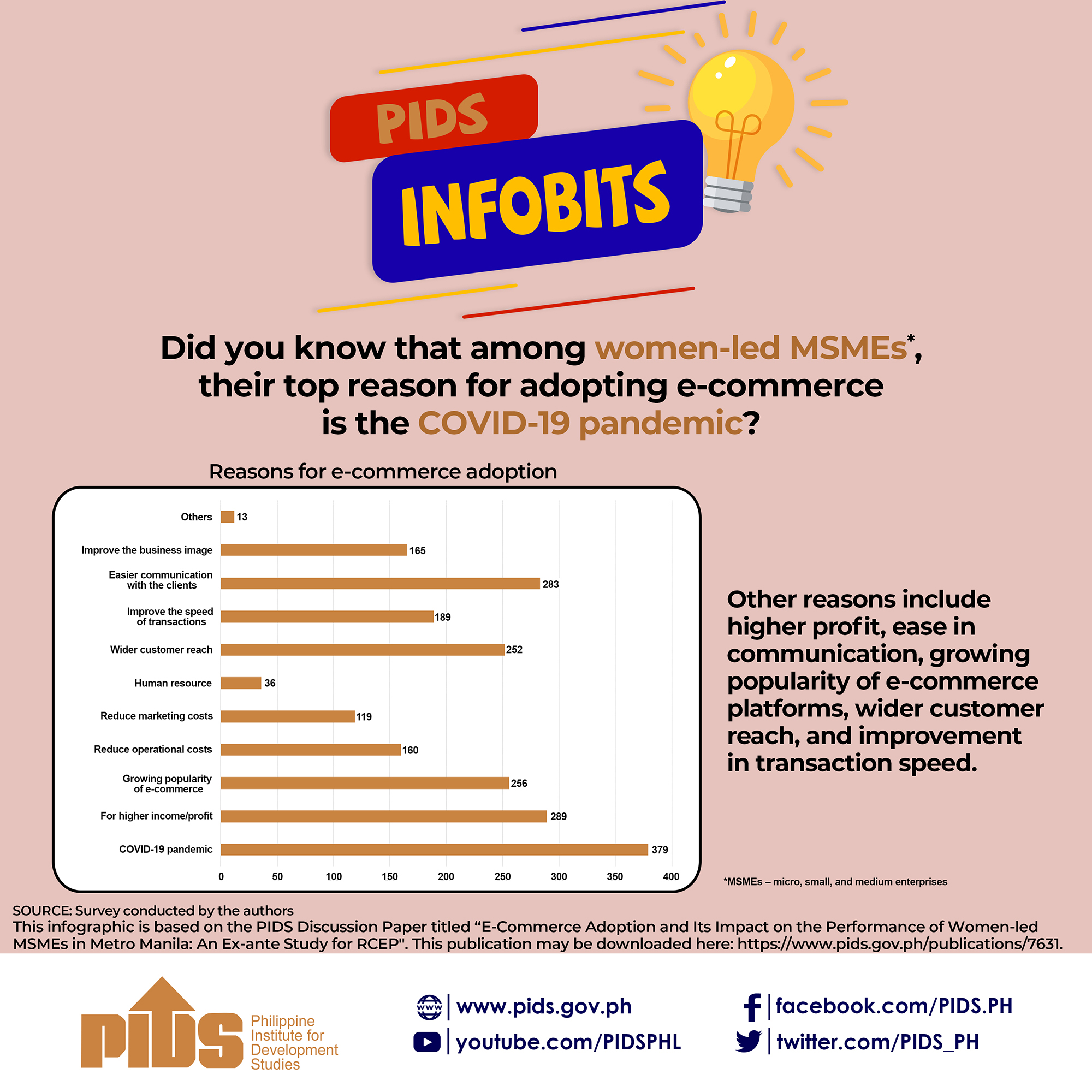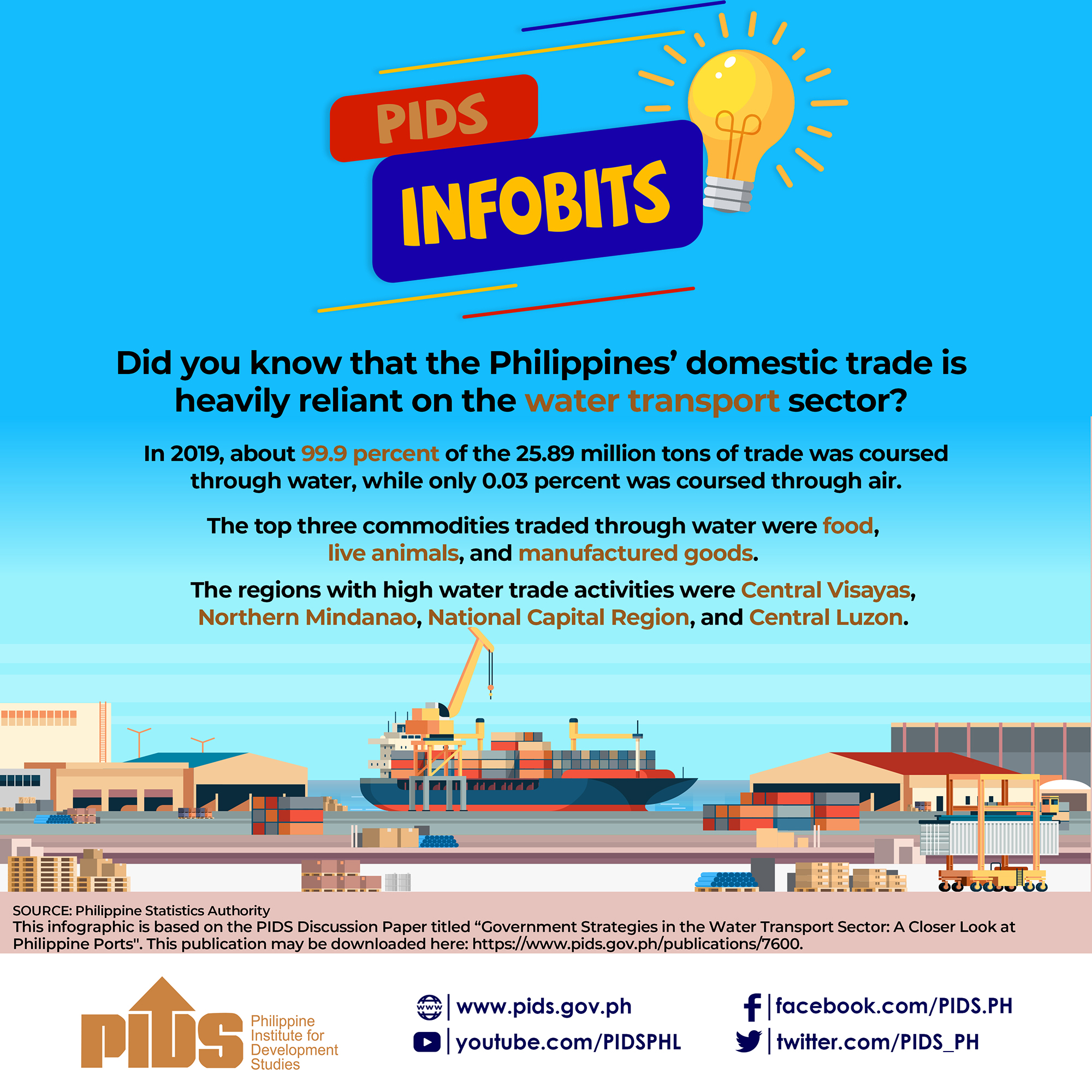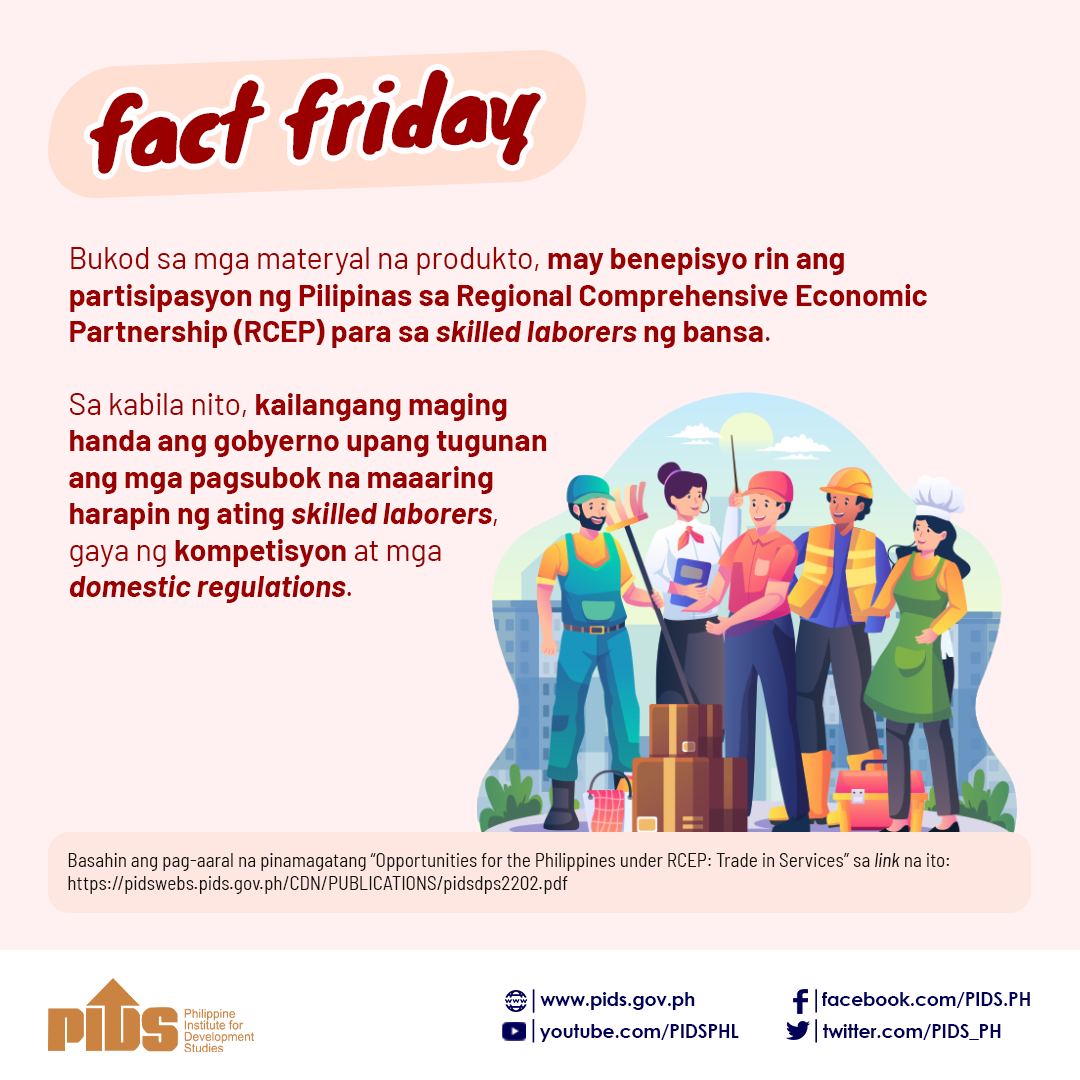
Increasing East Asian economic integration impelled the country to enter into bilateral and regional free trade agreements (FTAs) to overcome barriers to trade, amid continued deadlock in multilateral trade talks under the World Trade Organization. The country has engaged in 15 FTAs, seven of which are in effect and two are under negotiation. Six of these FTAs were proposed recently.
A historic feat is the entry into force of the Philippines-Japan Economic Partnership Agreement (PJEPA), the Philippines’ first bilateral free trade agreement. A study by the Philippine Institute for Development Studies (PIDS), titled “PJEPA: An initial ex-post review”, by Senior Research Fellow Erlinda Medalla and Supervising Research Specialist Veredigna Ledda, found that concerns over the supposed negative impact of the PJEPA, in particular on the automotive sector because of adjustment costs, did not materialize. The most visible benefit of a trade agreement such as the PJEPA is greater market access resulting from the elimination or reduction of tariffs. The PJEPA covers 7,476 tariff lines of Philippine exports, 93 percent of which are industrial goods, with the rest consisting of agricultural products. According to the provisions of the PJEPA, tariffs on 5,994 product lines or around 85 percent of these goods were scheduled for immediate elimination when the agreement entered into force in 2008. Emerging winners are agricultural products, as indicated by the surge in exports of fresh bananas after the implementation of the PJEPA. Beyond market access, the Philippines will benefit from training and the transfer of technology and skills as well as the opportunity for institution building and domestic reforms.
The Regional Comprehensive Economic Partnership (RCEP), negotiations for which were launched by the ASEAN+6 member-states in 2012, is poised to be the world’s biggest trading block, covering 40 percent of world trade. As a region-wide FTA, it holds great promise for stronger economic cooperation by achieving robust trade and investment flows. It is estimated that the value of trade between the Philippines and RCEP members is USD 60 billion. However, for the country to maximize the potential of RCEP, it has to address the impediments that have continued to stall the country’s growth: low utilization of FTAs, narrow fiscal space, inadequate infrastructure, and weak investor confidence, according to the policy paper titled “Key reforms for an effective Regional Comprehensive Economic Partnership” by PIDS President Gilberto Llanto and Ma. Kristina Ortiz. FTAs generally call for market access and investment liberalization, but they can also be instruments to increase competitiveness, enabling the country to compete better in the global economy.
Another FTA in the offing is the United States-led Trans-Pacific Partnership (TPP). Currently at an advanced stage of negotiations, which also involves Australia, Malaysia, Peru, Viet Nam, Canada, and Mexico, this trade alliance is envisioned to serve as a vehicle for Asia-Pacific-wide integration, representing more than 658 million people and a combined gross domestic product of USD 20.5 trillion or26 percent of global trade. More countries in the region are expected to join eventually. With its Asia-Pacific coverage, TPP aims for wider and deeper free trade scope encompassing investments, goods, and services. Erlinda Medalla asserts that the Philippines stands to gain from the TPP, particularly in increasing its exports or defending its market share. However, an issue that the Philippines should address both with the RCEP and the TPP is its ability to realize the benefits and manage the costs from these agreements.
To know more about PIDS research on FTAs, visit the SocioEconomic Research Portal for the Philippines. Simply type trade, trade liberalization, bilateral trade agreement, tariff, FTAs, PJEPA, RCEP, and related terms in the Search box.
Philippines-Japan Economic Partnership Agreement (PJEPA): An Initial Ex-post Review
Japan-Philippines Economic Partnership Agreement (JPEPA): Toward a Framework for Regional Economic Integration
Regional Comprehensive Economic Partnership: Reform Challenges and Key Tasks for the Philippines
On Free Trade Agreements (FTAs): the Philippine Perspective
Key Reforms for an Effective Regional Comprehensive Economic Partnership
An Analysis of the Philippine Offensive and Defensive Interests in the Non-agricultural Sector: Inputs to the Philippines-European Union Free Trade Agreement
What's Happening in the Philippine Free Trade Agreements?
The Boom in FTAs: Let Prudence Reign
PJEPA: Strengthening the Foundation for Regional Cooperation and Economic Integration, Vol. I
PJEPA: Strengthening the Foundation for Regional Cooperation and Economic Integration, Vol. II
A historic feat is the entry into force of the Philippines-Japan Economic Partnership Agreement (PJEPA), the Philippines’ first bilateral free trade agreement. A study by the Philippine Institute for Development Studies (PIDS), titled “PJEPA: An initial ex-post review”, by Senior Research Fellow Erlinda Medalla and Supervising Research Specialist Veredigna Ledda, found that concerns over the supposed negative impact of the PJEPA, in particular on the automotive sector because of adjustment costs, did not materialize. The most visible benefit of a trade agreement such as the PJEPA is greater market access resulting from the elimination or reduction of tariffs. The PJEPA covers 7,476 tariff lines of Philippine exports, 93 percent of which are industrial goods, with the rest consisting of agricultural products. According to the provisions of the PJEPA, tariffs on 5,994 product lines or around 85 percent of these goods were scheduled for immediate elimination when the agreement entered into force in 2008. Emerging winners are agricultural products, as indicated by the surge in exports of fresh bananas after the implementation of the PJEPA. Beyond market access, the Philippines will benefit from training and the transfer of technology and skills as well as the opportunity for institution building and domestic reforms.
The Regional Comprehensive Economic Partnership (RCEP), negotiations for which were launched by the ASEAN+6 member-states in 2012, is poised to be the world’s biggest trading block, covering 40 percent of world trade. As a region-wide FTA, it holds great promise for stronger economic cooperation by achieving robust trade and investment flows. It is estimated that the value of trade between the Philippines and RCEP members is USD 60 billion. However, for the country to maximize the potential of RCEP, it has to address the impediments that have continued to stall the country’s growth: low utilization of FTAs, narrow fiscal space, inadequate infrastructure, and weak investor confidence, according to the policy paper titled “Key reforms for an effective Regional Comprehensive Economic Partnership” by PIDS President Gilberto Llanto and Ma. Kristina Ortiz. FTAs generally call for market access and investment liberalization, but they can also be instruments to increase competitiveness, enabling the country to compete better in the global economy.
Another FTA in the offing is the United States-led Trans-Pacific Partnership (TPP). Currently at an advanced stage of negotiations, which also involves Australia, Malaysia, Peru, Viet Nam, Canada, and Mexico, this trade alliance is envisioned to serve as a vehicle for Asia-Pacific-wide integration, representing more than 658 million people and a combined gross domestic product of USD 20.5 trillion or26 percent of global trade. More countries in the region are expected to join eventually. With its Asia-Pacific coverage, TPP aims for wider and deeper free trade scope encompassing investments, goods, and services. Erlinda Medalla asserts that the Philippines stands to gain from the TPP, particularly in increasing its exports or defending its market share. However, an issue that the Philippines should address both with the RCEP and the TPP is its ability to realize the benefits and manage the costs from these agreements.
To know more about PIDS research on FTAs, visit the SocioEconomic Research Portal for the Philippines. Simply type trade, trade liberalization, bilateral trade agreement, tariff, FTAs, PJEPA, RCEP, and related terms in the Search box.
Philippines-Japan Economic Partnership Agreement (PJEPA): An Initial Ex-post Review
Japan-Philippines Economic Partnership Agreement (JPEPA): Toward a Framework for Regional Economic Integration
Regional Comprehensive Economic Partnership: Reform Challenges and Key Tasks for the Philippines
On Free Trade Agreements (FTAs): the Philippine Perspective
Key Reforms for an Effective Regional Comprehensive Economic Partnership
An Analysis of the Philippine Offensive and Defensive Interests in the Non-agricultural Sector: Inputs to the Philippines-European Union Free Trade Agreement
What's Happening in the Philippine Free Trade Agreements?
The Boom in FTAs: Let Prudence Reign
PJEPA: Strengthening the Foundation for Regional Cooperation and Economic Integration, Vol. I
PJEPA: Strengthening the Foundation for Regional Cooperation and Economic Integration, Vol. II

